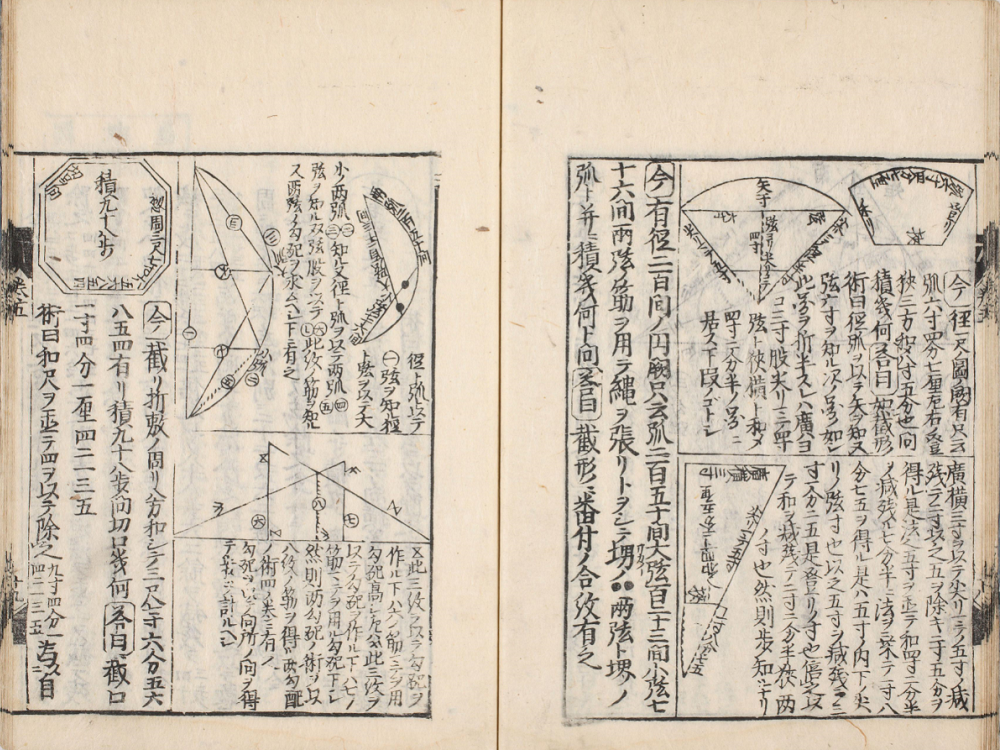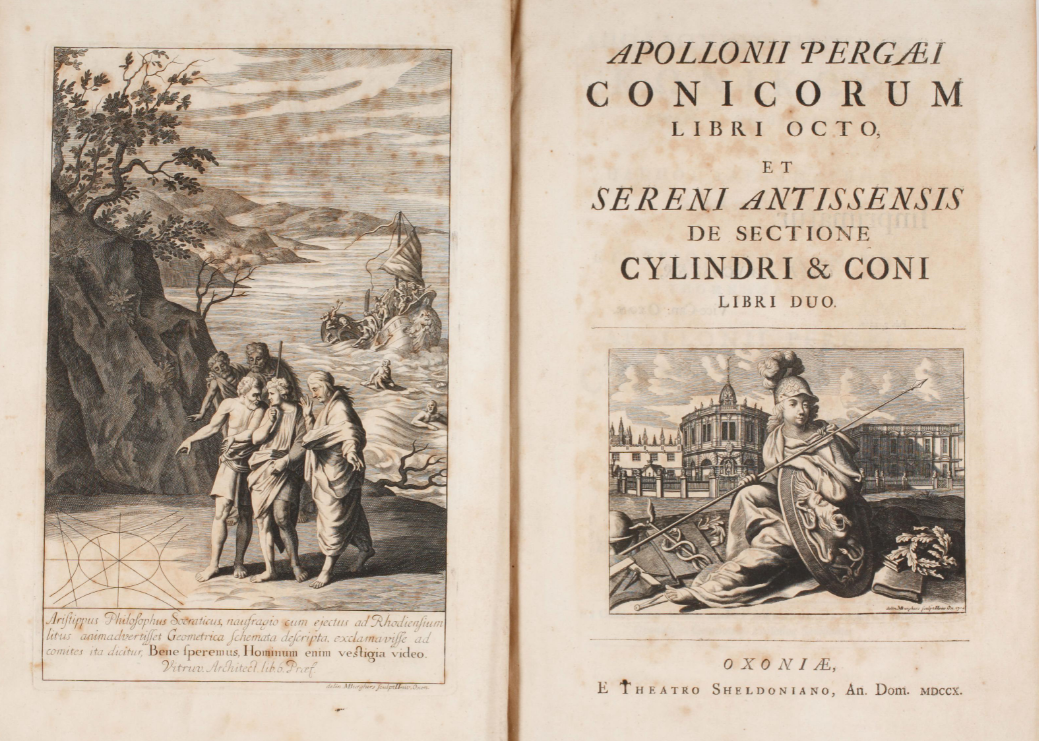This collection consists of books on Wasan, or Japanese mathematics, including astronomy, Chinese classics, as well as Western mathematics held by the Department of Mathematics, Mathematics Library, Graduate School of Science, Kyoto University.
- This collection was originally available on the website of the Department of Mathematics, Kyoto University, and was moved to Kyoto University Rare Materials Digital Archive on October 30, 2019.
Books on Wasan, or Japanese mathematics

Wasan, or Japanese mathematics, developed in Japan independently from the Western mathematics, through the Edo Period and the Meiji Era. Wa means Japanese and San means calculation. During the Edo period, Japanese people were isolated from European influences. Wasan has nurtured many excellent mathematicians, such as Seki Takakazu (関孝和; ?-1708), who discovered the "determinant" before European mathematicians. Also, Wasan has fostered many math enthusiasts among general Japanese people. Around the latter half of the Edo Period, it has become popular for them to dedicate Ema (votive picture of a horse) to shrines when they solved difficult problems. The custom was called Sangaku hono (算額奉納).
The department of Mathemactics holds about 400 books on Wasan. The most remarkable books include Jinko-ki (塵劫記), an introductory book that triggered enthusiasm in mathematics among Japanese people, Katsuyo Sanpo (括要算法), a posthumous collection of Seki Takakazu's works, and Toyoyoshi Shusai’s writings in his own hand (豊由周齋; year of birth and death unknown), who was a master of Wasan living in Kyoto.
We hope that you will enjoy these books on Wasan that was so much loved by Japanese people during the Edo Period.
Books on Western mathematics

The modern mathematics has its root in ancient Greece and has developed in modern Europe. The approximately 200 books the library holds include many books that have played significant roles in the progress of Western mathematics: Euclid's Elementorum, Apollonius’s Conicorum, Diophantus’s Arithmeticorum (our holding is the same edition as the one on which Fermat wrote the famous "Last Theorem" in the margin), Cavalieri’s Geometria indivisibilibus continuorum nova quadam ratione promota, Galileo Galilei’s Discorsi e dimostrazioni matematiche intorno a due nuove scienze attinenti alla meccanica ed ai movimenti locali, and works by Newton and Euler.
Although most of the books are written in Latin, Italian, French or German, some are in English and include many figures. Anyone who is interested in mathematics can enjoy the development of mathematics through these books.
Links on the history of mathematics
- National Diet Library: Japanese Mathematics in the Edo Period
- 東北大学デジタルコレクション 和算資料データベース
- 和算の館 (English)
- Yamagata University Academic Repository-佐久間文庫
- 房総数学文庫
- お茶の水女子大学附属図書館所蔵 和算資料コレクション
- Gallica, Bibliotheque nationale de France digital library
- Collection of Historical Sources on Mathematics provided by European Cultural Heritage Online (ECHO) -Open Access Infrastructure for a Future Web of Culture and Science-







































